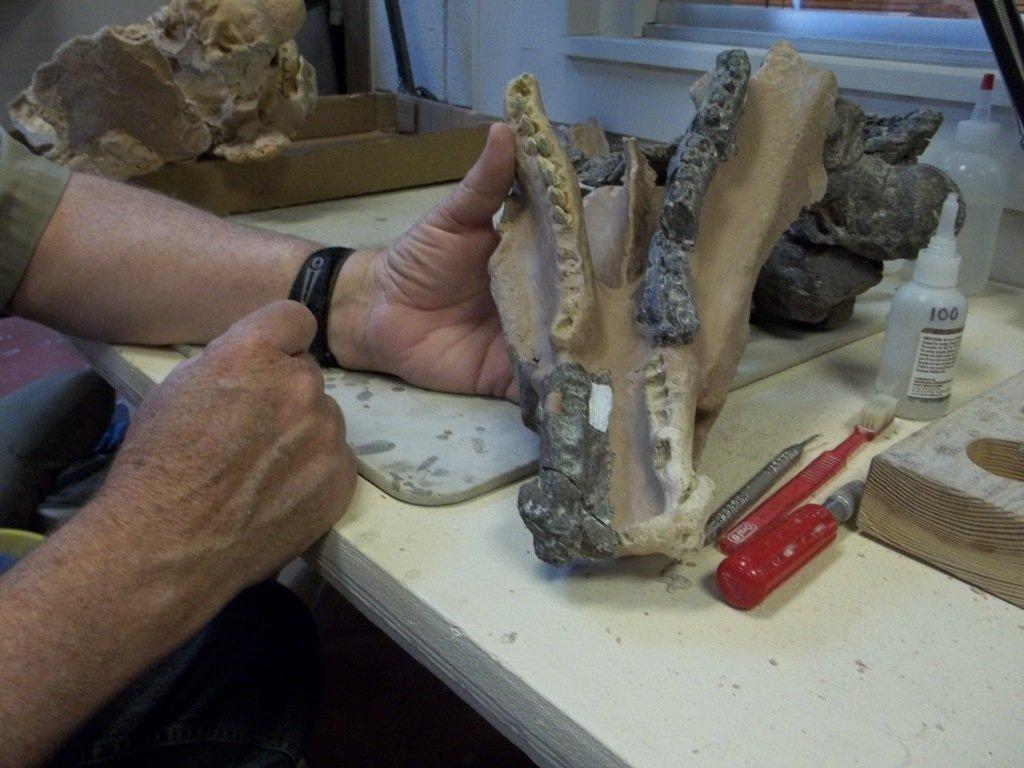The Utah State University- College of Eastern Utah Prehistoric Museum is offering another opportunity for museum goers to watch the preparation process of a dinosaur this week in their paleontology lab.
The skull of a Cretaceous period Cedarpelta bilbeyhallorum is being reconstructed to include real fossil in the museum’s display of the dinosaur that was discovered in 1992, just 45 miles away from Wellington in the Cedar Mountain Formation. Patrons can “meet” the dinosaur that Paleontology Lab Manager John Bird said “used to be a local resident”, as Bird works on it in the paleontology lab.
Though the skull was found at approximately the same time as the Utahraptor, the Cedarpelta is not as well-known.В Bird said the explanation for this is very simple. “The difference is,” he said, “the Utahraptor could kill you and eat you. This guy is just a plant eater.”
After hosting 4-H study opportunity last week, Bird continues his work on incorporating the real fossil into a cast he made of the dinosaur years ago. He compared the work he is doing to putting together two of the same puzzle, when “neither one has all the pieces.”
The Cedarpelta is an plant-eating armored dinosaur, related to the Gastonia, which has a long, narrow, beak-like snout. It is that snout, Bird explained, that set the dinosaur apart from its close relatives, and made it obvious that they had discovered a new species. The paper that introduced the new dinosaur was written by the Prehistoric Museum’s new director, Dr. Kenneth Carpenter.
Bird has enjoyed the reconstruction process especially, because he was involved from the beginning. “I’ve been able to go all the way from discovery, through excavation, preparation and study of the bones, to the naming of the animal, and now the reconstruction for display,” he said.
The reconstruction is another step in the fossil-restoration process that the museum has begun to allow patrons to see what parts of a display are authentic, and which are casts.
Anyone interested in watching the paleontology staff restore the fossils, or wanting more information, can contact the USU-CEU Prehistoric Museum at (435)613-5060.


